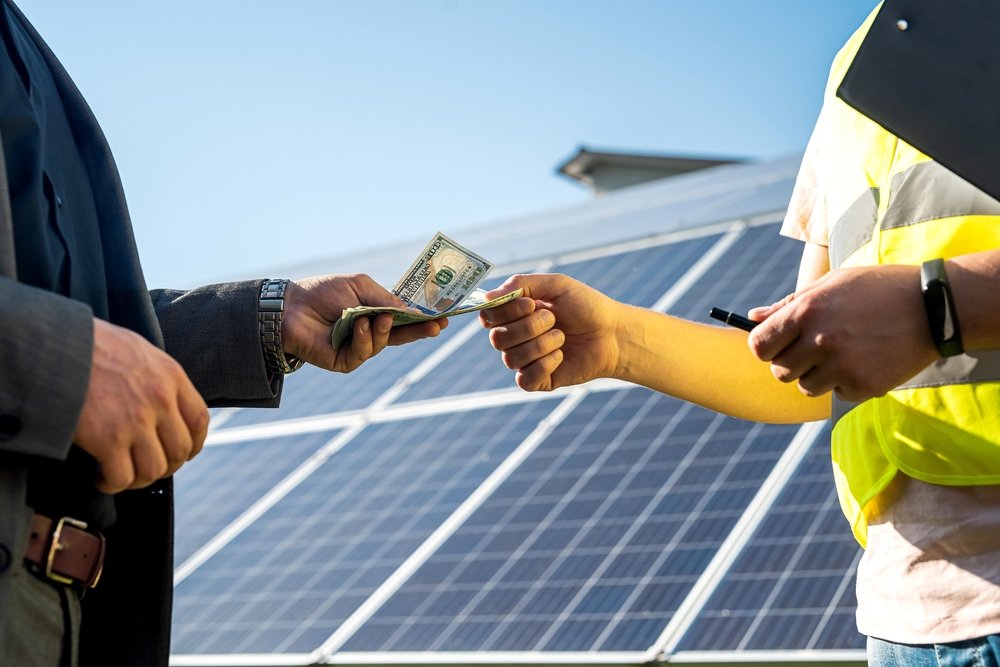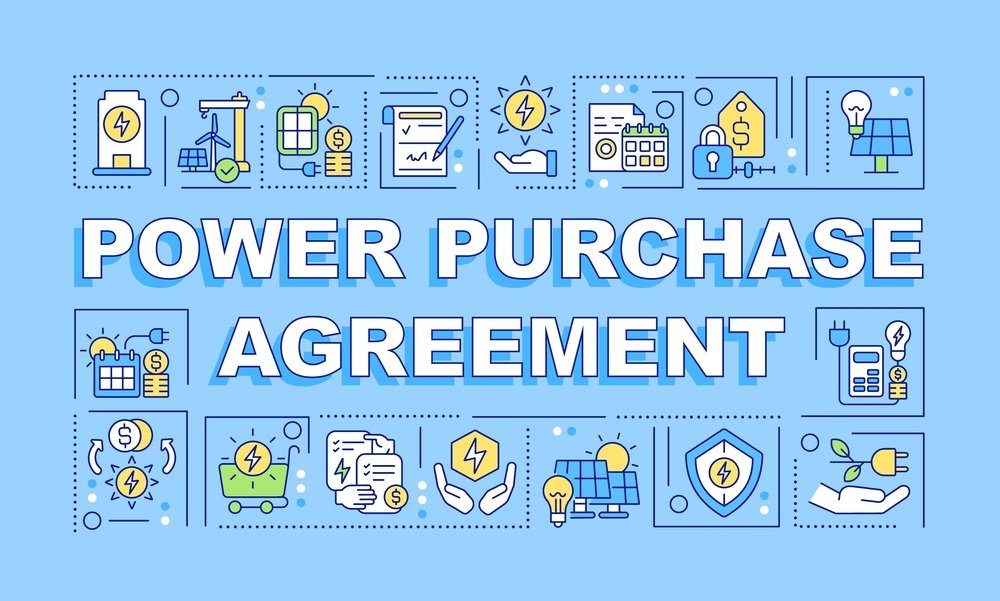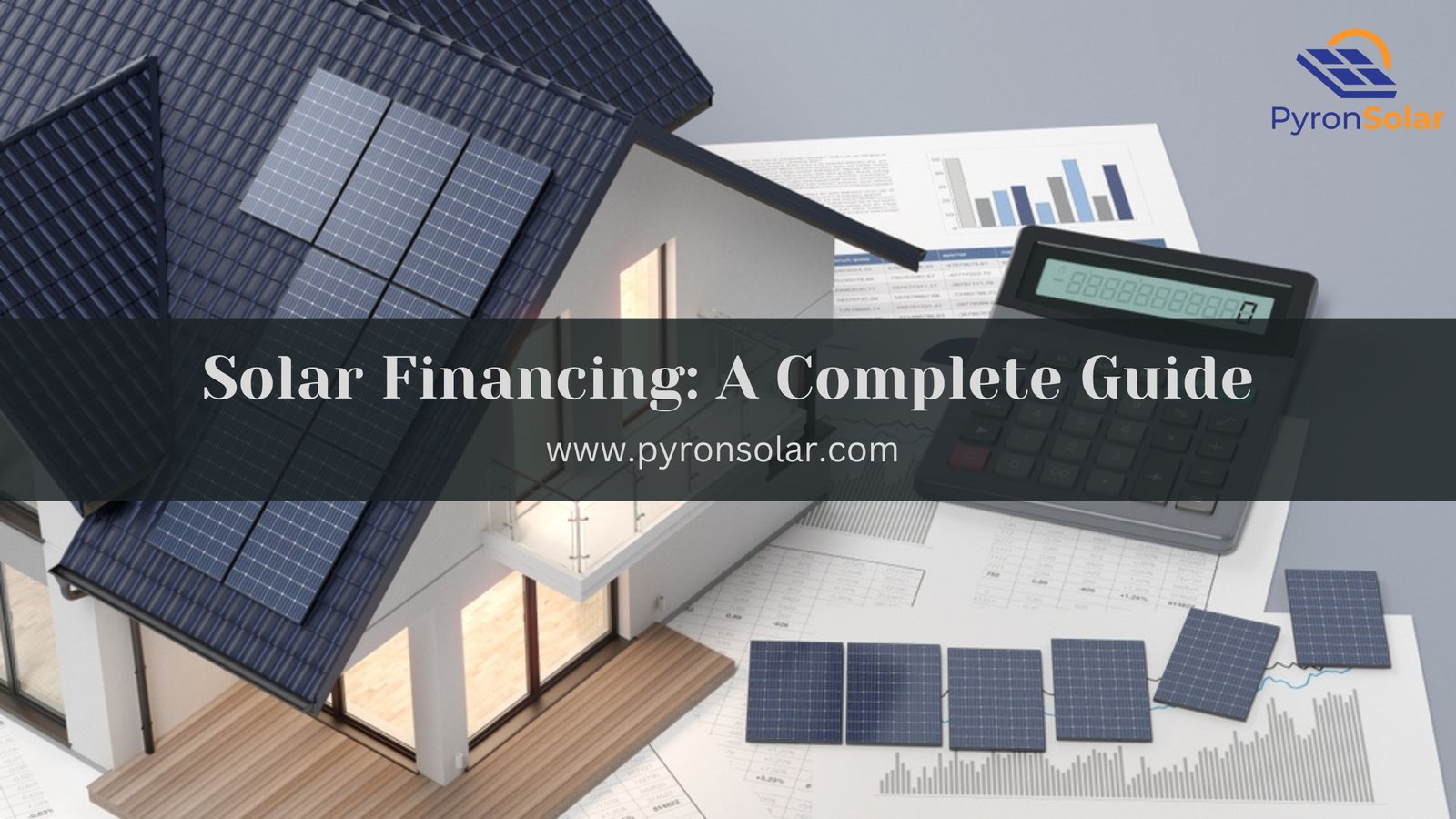Solar financing options that allow homeowners to install a solar energy system without paying the full upfront cost. Despite the higher upfront costs, which can be a barrier for homeowners at the initial stages, the investment can finally increase the property value in the real estate market. The cost of installing an average solar panel system in the US varies from $30,000 to $31,558.
As Solar energy has witnessed tremendous growth in the industry due to its environmental and financial benefits, as well as offering promising options to save your budget on electricity bills.
There are several solar system financing options such as cash payments, home equity loans, HELOCs (Home Equity Lines of Credit), and various other government programs, and incentives. Whereas solar loans, solar leases, or power purchase agreements (PPAs) come with zero-down solar options where you don’t need to pay any upfront costs.
Before choosing the right solar financing options, you need to perform research about the reputed solar financing companies in the market. This helps you to make thoughtful decisions about renting a solar panel, options to buy the system with your own money, or selecting suitable financing methods.
Best Solar Financing Options
Cash Payments

Purchasing solar panels with one-time cash payments covers the upfront fees for the whole setup of the solar system and its installation. This means that you are the owner of the entire system right from the first day itself.
Typically, the residential solar panel system in the US costs $30,000, which helps you to save electricity bill amounts annually, and takes 10 years to earn back your investment.
Here are the benefits and drawbacks of purchasing solar panel systems with direct cash payments:
Benefits:
- No Interest payments or fees.
- Enhanced property value since you own the system completely.
- Eligible to claim all the financial incentives and rebates as a homeowner owning your solar power system.
Drawbacks:
- Huge upfront costs might be affordable only for a certain set of individuals.
- Might take several years to recover your very first investment.
Solar Loans
Solar loans are installment loans offered by solar companies or third-party financial organizations. It can be a good choice if you aren’t able to pay the upfront costs. Under this scheme, you will receive a huge sum of money and repay in specified installments monthly for a certain period, usually between two and seven years. However, few lenders provide 10–25 years or sometimes even 30 years.
Mostly, solar loans are categorized into two main types, namely secured and unsecured loans. Under the secured loans scheme, your assets such as your home will serve as collateral to claim the loan. It means that the lender has the right to take away your property and sell it to get their money back if you don’t repay the loan on time. On the other side, unsecured loans don’t require any collateral and require only the solar equipment as proof. Although you can get approval on the same day, there could be additional fees that might be undisclosed.
Most solar loans come with zero-down options. The monthly amount paid depends on your system costs to install, your interest rate, your loan term, loan provider, principal (initial loan cost), financing terms, and fees, borrower’s credit score, and the type of loan chosen. The interest rate on solar loans is 4% to 7% but can reach up to 36%.
These are the benefits and drawbacks of purchasing solar panel systems through loan financing:
Benefits:
- No requirement for a one-time payment.
- Greater Return on Investment (ROI).
- Paid off within a shorter time than the original loan term.
Drawbacks:
- At times, the rate of interest can be high and require you to put your home or other valuable properties as collateral, which can be risky.
- Users might get confused and trapped if the agreement is unfavorable.
Home Equity Loans and Lines of Credit
The HELOC (Home Equity Line of Credit) is similar to a home equity loan, but instead of receiving a huge sum of cash, you’ll receive a line of credit that can be accessed according to your requirements. In other terms, they work as credit cards, where you will be allowed to perform only interest payments during the loan term so that your deposits will be reduced for the first few years.
The draw period lasts up to 10 years, followed by 10 to 20 years of payback period, which makes the HELOCs less predictable with lower interest rates of 8% to 10% when compared to personal and home equity loans. It might take 2 to 6 weeks to obtain a HELOC.
Property Assessed Clean Energy (PACE) financing is a special type of financing option in regions where local government has provided funds to assist property owners who aren’t able to purchase solar panels through cash, solar loans or leases, or PPAs. The PACE financing is considered a promising option. This is because property owners can pay their PACE funds once a year for a specified term of 10–20 years through an assessed value added to the property tax bill, rather than paying back the loan in monthly installments. Once you install solar panels using PACE financing, you will start enjoying the benefits without having the necessity to pay any upfront costs.
Benefits:
- Multiple withdrawals are supported during the draw period.
- HELOC Interest is tax-deductible on interest payments.
- Required to pay only draw charges.
Drawbacks:
- Monthly payments can be expensive during the repayment phase periods.
- At times, lenders may impose an early closure fee or advance payment charges if you pay off your remaining amount or close your account before specific months.
Solar Lease
Solar Lease is similar to the concept of loans where you have to pay monthly fixed payments. But the only difference is that a third-party owner (solar company) sets up solar panels on your property and sells you electricity generated from your panels at a fixed monthly rate.
You might be required to sign a solar lease agreement of 20–25 years with the leasing company so that you will have a choice to purchase the solar system at market value after the completion of the contract. In return, you can pay a fixed amount each month through a solar lease, which is based on the calculated annual electricity production of your solar power system.
Typically, solar lease costs between $50 and $250 per month with a yearly 3% inflation rate.
Through the zero-down solar lease, the monthly rate can be 15% to 45% lower than routine utility power rates, once your panels are installed and start operating.
Benefits:
- Provides cleaner, reasonable, and long-lasting energy with minimal to no upfront costs.
- Maintenance and repair costs are handled by the leasing company.
- The monthly payment systems are predictable.
Drawbacks:
- You cannot be eligible for incentives since you don’t own the system under the leasing financing options.
- There could be certain complications if you’re planning to sell your home.
- Annual rate increases from 1% to 3%, based on the rise in electricity rates of your region.
PPAs

A Power Purchase Agreement (PPA) is a financing option similar to leasing or renting a solar panel system for a term of 10–25 years. The solar company covers all the costs starting from the equipment purchase to the installation process on your roof. However, the main difference compared to leases is that the PPA charges fluctuate every month. This is because, using the PPA, you agree to purchase power generated by the system at a fixed kWh rate rather than the fixed monthly rate paid for a solar lease.
Using the zero-down solar PPA, your monthly electricity bill will be reduced from 10% to 30% compared to your previous bills with an annual rate increase of 1% to 3% per year, based on the agreement. Although you might save more money with this plan, it is less when compared to solar loans, which is one of the main reasons for its low popularity.
Benefits:
- No upfront costs since the zero-down offer doesn’t require you to pay any money until your solar panel system starts generating electricity for your home.
- PPA financier takes responsibility for handling proper care and payment for any requirements related to maintenance and labor.
- It is possible to save a considerable amount through PPAs, but not equal to solar ownership.
Drawbacks:
- You wouldn’t benefit from solar incentives such as the federal investment tax credit (ITC), solar renewable energy certificates, and any local rebates compared to solar energy loan financing options.
- Even though it is a fact that solar panel system increases your property value, it is valid only if you own the house, since it wouldn’t apply to solar leases and PPAs.
- The fluctuating PPA payments are more challenging to set funds aside rather than fixed monthly payments linked with solar lease and loan agreements.
How To Choose the Right Solar Financing Option?
Selecting the best solar financing options is essential to increasing your savings and the benefits of owning a solar panel system. Here is an interesting comparison of purchasing solar panels through Cash, Loans, Leases, and Power Purchase Agreements (PPAs) and find out which one works best according to your requirements:
Cash:
Purchasing through ready cash, makes you own the system completely and gain lifetime advantages of energy savings and tax incentives. However, you should be able to manage the higher initial costs to increase your property value in the real estate market and provide better resale value, which is considered one of the easiest financing options.
Solar Loans:
By taking loans, you wouldn’t be pressured about the huge initial investment for cash purchase by still retaining the ownership eligibility and enhanced property value. Even though you would be eligible for tax credits and incentives, your savings will be low when compared to cash purchases.
Solar Leases:
There are little to no upfront costs if you purchase solar panels through a lease, which is a promising option if you’re unable to give ready cash or secure a loan to take care of your installation. But, keep in mind that you might not be eligible for ownership and certainly miss out on tax credits and incentives. Since the agreement duration is longer, there are complications in selling your home, as you might not attain the desired increase in property value.
Power Purchase Agreements (PPAs):
Although there aren’t any upfront costs, PPAs wouldn’t be an advisable option to save huge money on electricity. Also, transferring PPA to a new owner could be complicated, particularly during long-term agreements. Similar to leasing, you won’t get the benefits of owning a solar system and won’t gain any tax rebates or sell renewable energy credits to your utility.
Best Solar Financing Companies
These are the best solar financing companies in the market you need to know along with their Unique Selling Points (USP):
1. Mosaic:
Having more experience than other solar loan platforms, Mosaic offers higher-quality financial equipment to meet market demands. Their USP is processing instant approvals of customers and simplifying the financing options through a user-friendly portal.
2. Sunlight Financial:
You can get solar loans through 30 years for lower monthly payments at an Annual Percentage Rate (APR) of 1.99%, 2.99%, and 3.99% at Sunlight Financial. Their USP is the availability of long-term loans with minimal monthly payments for residential solar systems, thereby reducing the financial burden on homeowners.
3. GoodLeap:
Known as a technology-driven company, GoodLeap offers financing for sustainable home improvements for solar panels and batteries. Their USP is an easy-to-use platform that provides a seamless financing experience.
4. Dividend:
Dividend Finance is one of the leading providers of solar and home improvement financing solutions to property owners that mainly focuses on promoting an efficient and sustainable world. It includes creating partnerships to connect homeowners, customer-centric contractors, and financial investors to improve the long-term results of everyone involved in the process. Their USP includes instant loan approval and same-day processing.
5. Energy Loan Network:
You can get the best financing deals for projects related to residential solar and energy efficiency through Energy Loan Network, which offers competitive rates and flexible contract duration between 8 years and 20 years. Their USP is to provide loans that have huge benefits compared to other standard banks, such as providing approvals on the same day and in-depth solar knowledge.
Is it better to buy a solar system outright or finance it?
Purchasing a solar system outright is beneficial in the long run due to increased savings and property value. Also, you will retain the ownership since the purchase as well as be eligible for net metering programs, a 30% federal tax credit, and various other solar incentives. However, you can choose to finance if the upfront cost seems to be a barrier for you.
Can you rent a solar panel?
Yes, You can rent solar panels through solar leasing and power purchase agreements (PPAs).
Through solar leasing, a monthly fee is paid to use the solar panels and the term lasts between 20 years and 25 years, depending upon the user’s budget and energy consumption needs.
Similar to the concept of leasing, the solar Power Purchase Agreements (PPAs) are a solar financing contract of 10 to 25 years, where the homeowners don’t pay the upfront costs. The difference is that the users sign a contract with a solar developer or third-party owner who is responsible for designing, licensing, and setting up the solar panel system.
In both these conditions, users won’t be eligible for any incentives or federal tax credits since they aren’t owners of the solar panel system.
Conclusively, you need to know that these two options are beneficial based on your financial circumstances and energy requirements.
Ray is an avid reader and writer with over 25 years of experience serving various domestic and multinational private and public energy companies in the USA.

